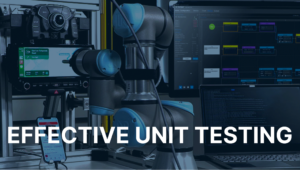The automotive industry has seen its share of system failures over the years, each with profound implications for both human lives and the financial stability and reputation of automobile companies and their parts manufacturers. In this industry, reliable and fault-tolerant embedded systems play a pivotal role, not only in preventing potential failures but also in ensuring the continued safety and reliability of vehicles on the road. Unfortunately, there are numerous examples of failures and malfunctions of embedded systems.
Airbag Deployment Failure
The non-deployment of airbags during a collision, or inadvertent deployment without a collision, can significantly impact passenger safety. In the early 2000s, defective Takata airbags were linked to numerous injuries and deaths worldwide, leading to one of the largest automotive recalls in history.
Brake System Failure
A malfunction in a vehicle’s brake system, such as a brake line leak or ABS (Anti-lock Braking System) failure, can result in the inability to stop the vehicle properly, leading to accidents causing injuries or fatalities. In 2010, Toyota faced a massive recall due to reports of unintended acceleration caused by faulty accelerator pedals and floor mats, which resulted in numerous accidents and fatalities.
Power Steering Failure
Loss of power steering assistance due to system failure can make it difficult for drivers to control the vehicle, especially at higher speeds or during maneuvers. In 2011, General Motors recalled millions of vehicles due to a defect in power steering systems that could suddenly fail, posing a significant safety risk.
Battery System Failure in Electric Vehicles
Electric vehicles rely on complex battery systems for power, and failures in these systems can lead to loss of propulsion or, in extreme cases, fires. In 2013, Tesla Motors faced scrutiny after several incidents of battery fires in its Model S vehicles, prompting investigations and safety improvements.
Ignition Switch Malfunction
Faulty ignition switches can unexpectedly shut off a vehicle’s engine while driving, disabling critical safety features such as airbags and power steering. This was the case with the General Motors ignition switch recall in 2014, where defective switches were linked to frequent accidents and fatalities.
Autonomous Vehicle Malfunction
As autonomous vehicles become more prevalent, ensuring fault tolerance in their systems becomes crucial. Any failure in sensors, computer vision systems, or decision-making algorithms could lead to accidents. For instance, in 2018, an Uber autonomous vehicle struck and killed a pedestrian in Arizona, raising concerns about the safety of self-driving technology.
As the automotive industry continues to evolve with advancements in technology, ensuring fault tolerance in-vehicle systems remains a fundamental priority. Beyond meeting regulatory standards, it’s a commitment to the safety and well-being of all road users.
















